In today’s world we are drowning in digital interactions, and let’s face it, most of them are forgettable. Your AI? It’s either part of that noise or it’s a beacon. The code is just the skeleton. The flesh, the blood, the soul of the user experience—that’s perception. If your AI interacts like a digital Eyesore, constantly sighing through its algorithms, guess what? Your users are hitting the eject button faster than you can say “core dump.” They’re bailing. Period.
So, what’s the antidote to this digital drudgery? We’re diving deep into a game-changer today: the Optimistic Tone in AI Personas. Now, before you imagine some relentlessly cheerful, digital Pollyanna spewing saccharine inanities—stop. That’s not what we’re building here. We’re talking about crafting AI with a tone that’s strategically supportive, genuinely encouraging, and relentlessly solution-oriented. It’s an AI that believes in the user’s ability to succeed, an AI that lifts them up, not one that makes them feel like they’re battling a toaster with a bad attitude.
And why should you care? Why does this “feel-good” stuff matter? Because this isn’t about fluffy clouds and digital rainbows; it’s about cold, hard, tangible results. We’re talking about radically improved user experience, skyrocketing engagement, and a brand perception that doesn’t just speak but resonates. This is about turning passive users into active advocates. This is about building AI that people don’t just use, but actually like. Forget the fluff; we’re chasing an uplift in your bottom line, starting with the very personality you bake into your bits and bytes.
Okay, settle in. We’ve established that an AI that sounds like it’s having a perpetual bad day is, well, bad for business. So, let’s get into the nitty-gritty. How do we move from digital drab to digital fab? It starts with understanding the why and the how.
The Psychology Behind the Smile: Why Optimism Resonates

If you think this is just about picking “happy words”? Think again. This is about tapping into some pretty fundamental human psychology. We’re wired to respond to certain cues, and an optimistic tone hits all the right notes.
First off, let’s talk Human-Centered Design – and frankly, it’s just common sense, or it should be. We, as humans, have a natural preference for positive reinforcement. Remember getting a gold star in kindergarten? Felt good, right? An AI with an optimistic tone provides that little dopamine hit, making interactions more pleasant and encouraging us to continue. It’s not about coddling; it’s about aligning with how our brains are already built.
Then there’s Cognitive Ease & Problem Solving. When a user hits a snag – and they will, because nothing is perfect, not even my designs (though they’re close) – how does the AI react? A frustrated or neutral tone can amplify the user’s own irritation, making the problem seem bigger. An optimistic AI, on the other hand, frames challenges as solvable. It says, “Okay, that didn’t work, but let’s try this!” This approach makes the user feel more capable and less like they’re battling an unfeeling machine. It actually reduces the mental load, making it easier to find a solution.
And here’s a big one: Building Rapport (Even with a Bot). I know, I know, “rapport with a bot?” Sounds like something out of a sci-fi B-movie. But hear me out. When an AI is consistently encouraging, supportive, and seems genuinely invested in your success, it creates a subtle sense of connection. Users become more willing to engage, share information, and ultimately, trust the system. We’re social creatures, and those social cues matter, even when we know we’re talking to lines of code. An AI that “believes” in you is an AI you’re more likely to trust and use.
A question to consider: “Why is a positive tone important in AI?” Well, if you haven’t figured it out by now, it’s because it makes the tech more usable, more effective, and less likely to make people want to throw their devices out the window!
Benefits: More Than Just Good Vibes – The Tangible Upsides

If the psychology isn’t enough to convince you, let’s talk brass tacks. Implementing an optimistic tone isn’t just a “nice-to-have”; it delivers real, measurable benefits. This is where the rubber meets the road, or in our case, where the user meets the interface.
First up: Increased User Engagement & Retention. This one’s a no-brainer. People naturally gravitate towards positive experiences. If your AI makes users feel good, competent, and supported, they’re going to use it more often and stick around longer. It’s the digital equivalent of a welcoming environment versus a hostile one. Which one are you returning to?
Next, Improved Task Completion Rates. Think about it. If an AI is encouraging you, especially when you hit a difficult step, you’re more likely to push through. Imagine a fitness app AI that, instead of just barking data, says, “Great effort today! You’re really pushing yourself. Let’s keep that momentum going for the next set!” That little bit of positive reinforcement can be the difference between a user giving up and a user achieving their goal. Higher task completion means a more effective product. Simple.
Then there’s Enhanced Brand Perception & Loyalty. Your AI isn’t just a standalone tool; it’s a direct reflection of your brand. If your AI is clunky, cold, or condescending, that’s how users will see your company. Conversely, an AI that is helpful, optimistic, and a pleasure to interact with paints your entire brand in a positive light. It’s not just an interface; it’s an ambassador, working 24/7 to build goodwill and loyalty.
And crucially, especially in support scenarios: Reduced User Anxiety & Frustration. Let’s face it, users often interact with AI when they already have a problem. A calm, optimistic, and patient AI can de-escalate tension, make users feel heard, and guide them to a solution without adding to their stress. This transforms a potentially negative experience into a surprisingly positive one.
So, “What are the benefits of an optimistic AI?” In short: users who stick around, get more done, love your brand, and don’t end their sessions wanting to tear their hair out. Sounds pretty good, right?
Designing for Optimism: Practical Steps & Technical Considerations

Okay, so hopefully we’re sold on the why. Now for the how. Crafting an optimistic AI persona isn’t about sprinkling some happy emojis and calling it a day. It’s about thoughtful design and smart technical implementation. This is where the art meets the science.
The absolute foundation is Language & Lexicon. This is ground zero. You need to consciously choose words and phrases that uplift, support, and focus on solutions.
* Think positive framing: Instead of “You entered the wrong password,” try “Let’s try that password again,” or “Hmm, that password doesn’t seem to match. Need a hint or a reset?”
* Use encouraging phrasing and supportive vocabulary: Words like “Great job!”, “You’re on the right track!”, “Let’s figure this out together.”
* Avoid condescending tones or overly simplistic language, but also steer clear of dense AI text and jargon that makes users feel lost or inadequate. The goal is user-friendly AI text that empowers.
* Technically, this means meticulous crafting of your AI’s response templates and leveraging Natural Language Processing (NLP) to understand user sentiment and respond appropriately. Your LLMs need to be trained on datasets that reflect this desired optimistic output.
Next, consider Interaction Flow & Error Handling. This is critical. How does your AI behave when the user makes a mistake or hits a dead end? A poorly designed error message can obliterate any goodwill you’ve built.
* Instead of a blunt “Error: Task failed,” which feels like a digital slap in the face, opt for something like, “It seems we hit a little snag. No worries! Let’s try a different approach,” followed by constructive suggestions.
* The flow should always guide the user forward, even if it’s just to a human support channel. The AI should feel like a helpful guide, not a gatekeeper. This means robust state management and context awareness in your backend.
A word of caution: Nuance is Key: Avoiding Toxic Positivity. There’s a Grand Canyon-sized difference between genuine, supportive optimism and that fake, plastered-on smile that just feels… off. If a user is clearly frustrated, an AI that responds with relentless, over-the-top cheerfulness will come across as tone-deaf and annoying.
* The AI must be capable of acknowledging difficulty (“I understand this can be tricky…”) before pivoting to a positive, solution-oriented stance (“…but we can work through it. Here’s what we can try next.”). This requires sophisticated sentiment analysis and adaptive response mechanisms. Authenticity is paramount.
And finally, let’s touch on Personalization (Within Ethical Bounds). An optimistic tone can feel even more genuine if it’s subtly tailored. If the AI remembers previous successes or common sticking points for a user, it can offer even more relevant encouragement.
* For example: “Welcome back, Steve! You conquered that complex reporting feature last time, so I know you’ve got this!”
* Of course, this treads into data privacy and ethical AI design. Personalization must be transparent and user-controlled. We’re aiming for helpful, not creepy.
Common Questions Related to the Optimistic Tone
Let’s tackle some common questions head-on. I hear these all the time, and it’s crucial to clear the air so we can focus on building truly great AI.
-
Q: Can AI have a personality?
- Answer: Look, let’s be crystal clear. When we talk about AI “personality,” we’re not discussing sentience, feelings, or whether your laptop is secretly pondering the meaning of existence. It’s not. What we are talking about is a designed set of characteristics, behaviors, and tones that make the AI more relatable, predictable, and effective. It’s about intentional design, not accidental consciousness. So, yes, an AI absolutely can—and should—have a designed personality. And an optimistic one is often a very smart choice.
-
Q: What makes a good AI persona?
- Answer: Several things. Consistency is huge; if your AI is cheerful one minute and a drill sergeant the next, users will be confused and distrustful. Clarity of purpose – the persona should align with what the AI is trying to help the user achieve. Alignment with brand values – it needs to feel like a natural extension of your company. And, of course, an appropriate and effective tone. A “good” AI persona is one that is useful, usable, and makes the interaction better, not worse. For many applications, an optimistic tone is a cornerstone of “good.”
-
Q: How does AI persona affect user experience?
- Answer: Massively. Think of it as the entire flavor of the interaction. A well-crafted persona, especially an optimistic one, can transform a mundane or frustrating task into something manageable, even pleasant. It directly impacts user engagement (do they want to keep interacting?), trust (do they believe the AI is competent and helpful?), task success (does the AI effectively guide them to their goal?), and overall satisfaction. Get the persona wrong, and users will bolt. Get it right, and you don’t just have a user; you have an advocate for your product.
-
Q: What are the ethical considerations of an AI’s tone?
- Answer: This is absolutely critical, and anyone who tells you otherwise is either naive or trying to sell you snake oil. An overly optimistic tone can be misleading, especially in sensitive contexts. Imagine an AI delivering bad medical news with a chipper “No worries!” – it’s inappropriate and harmful. Or an AI giving financial advice with unwavering optimism that ignores risks.
- The key ethical considerations here are honesty, transparency, and managing expectations. The AI should not use an optimistic tone to deceive, manipulate, or create false hope. It’s about responsible optimism, not deceptive cheerfulness. Users need to understand the AI’s limitations. We build tools to empower, not to mislead. That’s integrity.
- Answer: This is absolutely critical, and anyone who tells you otherwise is either naive or trying to sell you snake oil. An overly optimistic tone can be misleading, especially in sensitive contexts. Imagine an AI delivering bad medical news with a chipper “No worries!” – it’s inappropriate and harmful. Or an AI giving financial advice with unwavering optimism that ignores risks.
Case Studies: Optimism in the Wild (Where It Works & Why)

Theory is great. Principles are essential. But let’s be practical. We want to see it in action. Where is an optimistic tone in AI not just a nice idea, but a proven winner? Let’s look at some (perhaps hypothetical, but entirely plausible) scenarios. We’re looking for proof, not just promises.
-
The Encouraging E-Learning Platform:
- Imagine an AI-powered language tutor. A student struggles with a complex verb conjugation.
- Bad AI: “Incorrect. Try again.” (Helpful, right? Not.)
- Optimistic AI: “Almost! That’s a tricky one. Remember the pattern for irregular verbs we looked at? Let’s break it down. I know you can get this!”
- Why it works: Learning is hard. Frustration is a major cause of dropout. An AI that offers specific encouragement, normalizes difficulty, and expresses confidence in the student’s ability can significantly improve motivation, persistence, and ultimately, learning outcomes. The technical aspect here is the AI’s ability to identify the specific error type and offer tailored, positive feedback.
- Imagine an AI-powered language tutor. A student struggles with a complex verb conjugation.
-
The Supportive Customer Service Bot:
- A customer is furious because their shipment is late.
- Bad Bot: “Your package status is: Delayed. Expected delivery: Unknown.” (Cue customer meltdown.)
- Optimistic Bot: “I understand how frustrating a delayed shipment is, and I’m truly sorry for the inconvenience. Let me look into this immediately for you. While I check for the latest update, I can also see if we can offer [a small discount/expedited shipping on next order] for the trouble. Let’s get this sorted out.”
- Why it works: The optimistic bot acknowledges the user’s emotion (empathy, even if simulated), takes ownership, and immediately pivots to solutions and potential positive outcomes. It de-escalates. The humorous touch is that sometimes, a bot handles this better than an overwhelmed human agent.
- A customer is furious because their shipment is late.
-
The “You Can Do It!” Fitness App:
- User skips a workout.
- Bad App: Silent disapproval or a guilt-tripping “You missed a workout.”
- Optimistic App: “Hey, looks like yesterday was a rest day! Sometimes life gets busy, or our bodies just need a break. Ready to jump back in today? Even a short session can make a big difference, and you always feel great afterwards!”
- Why it works: Fitness is a journey with ups and downs. A shaming tone is demotivating. An understanding and encouraging AI normalizes setbacks and focuses on getting back on track. It’s about progress, not perfection. It taps into that desire to succeed and subtly reminds the user of the positive feelings associated with the activity.
- User skips a workout.
These aren’t just cute interactions. They represent AI designed with an understanding of human motivation, leading to better engagement, problem resolution, and user loyalty. That’s the power of well-executed optimistic design.
Challenges & Pitfalls: Navigating the Nuances of Positivity
Now, let’s not get carried away on a fluffy cloud of digital optimism. Implementing this effectively isn’t without its challenges. Get it wrong, and you can do more harm than good. Precision, people, precision!
-
The Risk of Sounding Disingenuous or Patronizing: This is a big one. If the optimism feels forced, unearned, or like a cheap script, users will see right through it. It’s the difference between a genuine “You’ve got this!” and a smarmy “Aren’t we doing great today?” Ugh.
- Technical solution: This requires sophisticated NLP to vary responses, understand context deeply, and avoid repetitive, generic cheerleading. The language models need to be trained on high-quality, nuanced datasets.
-
Misalignment with Serious Contexts: As I touched on with ethics, an overly cheerful AI discussing a critical system failure, a data breach, or a user’s serious personal issue is a recipe for disaster. Imagine your banking app chirping, “Oopsie! Your account balance is unexpectedly zero! But hey, it’s a beautiful day!” Context is everything.
- Instructional point: Design guidelines must clearly define scenarios where a more serious, empathetic, or neutral tone is required. Tone modulation is key.
-
Maintaining Authenticity: How do you ensure the optimistic tone feels earned and appropriate to the situation, rather than just a default setting? This is where good writing and smart design come together. The AI needs to show it understands the user’s situation before applying the optimism.
- If a user has failed multiple times, a simple “You can do it!” might fall flat. Instead: “I see this step is proving tricky. That’s okay, complex tasks often take a few tries. How about we look at [alternative approach/hint]?”
-
The “Uncanny Valley” of Emotion: You know what I mean. When something tries to be human-like but doesn’t quite hit the mark, it ends up being just… unsettling. An AI attempting complex optimistic expressions without the sophistication to back it up can feel creepy or weird.
- Our advice: It’s often better to aim for clear, simple, supportive positivity than to overreach and create something awkward. Reliability and clarity trump flawed complexity.
The Future is Bright (And So Is Your AI)

So, where is all this heading? If you think optimistic AI personas are just a cute trend, you’re missing the bigger picture. This is foundational for the next generation of human-computer interaction.
-
Beyond Basic Chatbots: We’re rapidly moving past clunky, keyword-driven chatbots. The future lies in truly sophisticated, emotionally intelligent AI personas. And I don’t mean AI that has emotions – I mean AI that can intelligently perceive human emotional cues and adapt its own designed tone – optimistic, empathetic, serious, instructional – seamlessly and appropriately. This requires breakthroughs in affective computing and much more advanced LLMs.
-
AI as a Genuine Partner: My vision? AI that transcends being a mere tool and becomes a genuine partner in our endeavors. Imagine an AI that doesn’t just execute your commands, but actively encourages your creativity, motivates you when you’re stuck, helps you learn complex skills with unwavering support, and celebrates your successes. This isn’t science fiction; it’s the logical evolution. An AI that helps you write better code, design a better product, or even manage your well-being, all with an undercurrent of supportive optimism.
-
Ethical Evolution: Hand-in-hand with this advancement comes an even greater responsibility for ethical evolution. As these AI personas become more influential and integrated into our lives, the imperative for integrity, technical competence, honesty, and reliability in their design becomes paramount. We must ensure these powerful tools are built to genuinely benefit users, to uplift and empower, not to manipulate or exploit. Transparency in how these personas are designed and operate will be non-negotiable.
The future of AI is incredibly bright, but only if we build it thoughtfully. An optimistic tone, implemented correctly, is a key ingredient in making that future one where technology truly serves humanity in a more inspiring way.
Conclusion: It’s Not Just What Your AI Says, But How It Says It
Alright, we’ve covered a lot of ground. From the psychology of a digital smile to the nuts and bolts of designing for optimism, and the very real challenges and ethical lines we need to navigate.
Let’s boil it down. The core takeaway is this: in the increasingly crowded digital landscape, the tone of your AI is a powerful differentiator. An optimistic, supportive, and encouraging AI persona can dramatically boost user engagement, build profound trust, and elevate overall user satisfaction from “meh” to “amazing.” It’s the difference between a tool people tolerate and a tool people genuinely value and even enjoy using.
So, what are you waiting for? Stop architecting digital doormats – AIs that are functional but lifeless, or worse, frustrating. The era of the cold, impersonal machine is over. It’s time to start designing AI personas that inspire, uplift, and actually help people achieve their goals. The technology is here. The understanding of human psychology is available. The know-how, the sheer design and engineering audacity to pull it off? That’s what we at Silphium Design bring to the table. Let’s build something insanely great together.
And a final thought: If your AI currently sounds like it desperately needs a vacation, or perhaps a strong cup of coffee and a pep talk, then your users probably feel the same way… about your product. It’s time to fix it. Don’t just make it work; make it work wonders.







